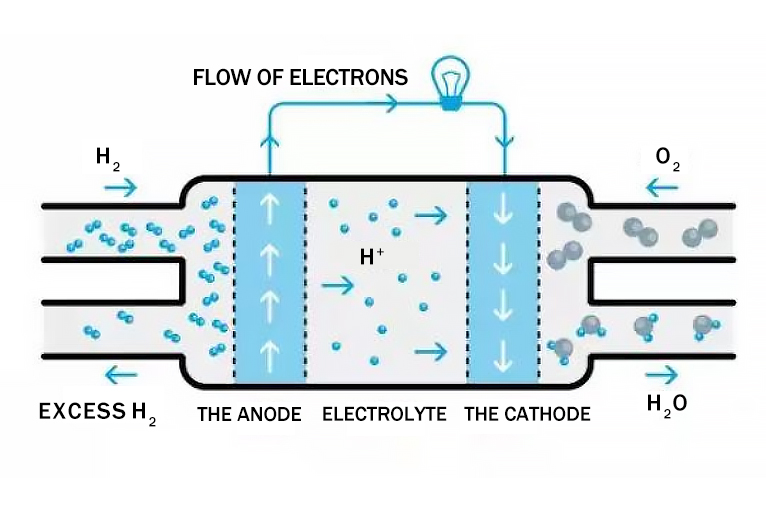google-site-verification: google0228a1feb97d321e.html
google-site-verification: google0228a1feb97d321e.html
google-site-verification: google0228a1feb97d321e.html
google-site-verification: google0228a1feb97d321e.html
google-site-verification: google0228a1feb97d321e.html
google-site-verification: google0228a1feb97d321e.html
PEMFC- Proton Exchange Membrane fuel cell——Proton Exchange membrane fuel cell coating——Shanghai Yangmi ultrasonic spraying
PEMFC- Proton Exchange membrane fuel cell:
Electrolyte: water - based acid polymer membrane
Also known as polymer electrolyte membrane fuel cells
Both electrodes use platinum-based catalysts
Hydrogen is usually used as fuel
Operating at relatively low temperatures
High temperature fuel cells use mineral acid electrolytes

PEMFC is the most commonly used automotive fuel cell. It uses a polymer membrane as an electrolyte and a carbon electrode containing platinum. The latter makes the battery relatively expensive, but it can be recycled, and platinum alternatives are being studied that may reduce costs. The cell requires only oxygen and pure hydrogen for fuel and produces only water as a residual substance. Operating at low temperatures of around 80 degrees Celsius, they can meet the vehicle's high demand for high-density power during the initial phase. Fuel cell electric vehicles (FCEVs) that use pure hydrogen to drive a motor have no emissions other than water.
In order for hydrogen to be widely adopted, expensive filling infrastructure would have to be built. Refueling is not as simple as gasoline and so on. In principle, hydrogen can be produced on site by adding electrolytic cells (devices that carry out the hydraulic electrolysis process) as well as power and water sources. This eliminates the need to liquefy the hydrogen and transport it to a filling station. However, the hydrogen produced must be compressed before it can be delivered to the vehicle, and the heat generated during compression must be removed through a cooling process. Liquefaction is not strictly necessary in transportation, but it can improve efficiency. The liquefaction process involves compression and cooling to below 240 degrees Celsius, which requires a lot of energy. All components of an aeration system require energy and equipment, making it relatively complex and expensive.

The development of fuel cell industry cannot be separated from the research and innovation of ultrasonic spraying technology. Shanghai Yangmi ultrasonic spraying, proton exchange membrane fuel cell coating technology solutions, enabling ultrasonic applications and surface treatment applications from research and development to mass production.

Equipment Features:
◆Automatic ultrasonic spraying equipment, using ultrasonic nozzle technology, can provide uniform and efficient film spraying
◆ High precision of coating thickness control: the coating can be prepared from 20 nm to tens of microns, and the coating thickness can be accurately controlled
◆Spraying uniformity: >95%
◆Solution conversion rate: ≥95%, 4 times the traditional two fluid spraying
◆ Equipped with multiple nozzles working in parallel (extensible)
◆ Maximum spraying area: 400*400mm (expandable)
◆High precision constant current liquid supply technology, can realize uninterrupted steady constant liquid supply
◆Laser alignment: to assist users to locate the nozzle position easily and quickly
◆ Imported high-precision pressure-reducing valve and liquid valve, to achieve high-speed and stable gas-liquid coordination
◆Nozzle, liquid pipeline self-cleaning system, built-in waste liquid recovery system, exhaust gas exhaust system
◆Online dispersed liquid supply system, hundreds of process formula storage
◆ Microporous vacuum heating, suitable for battery diaphragm and other flexible substrates
YMUS provides you with a one-stop nano coating quality process and solution, ultrasonic spraying equipment technology applications.